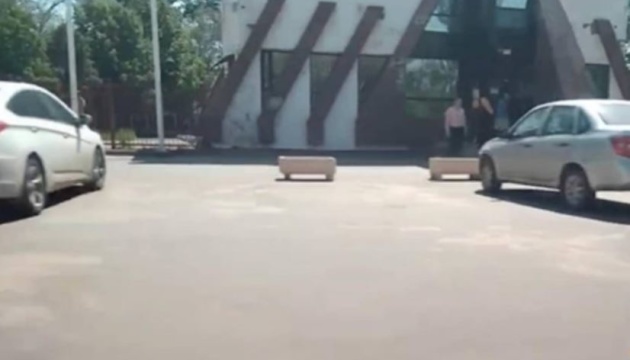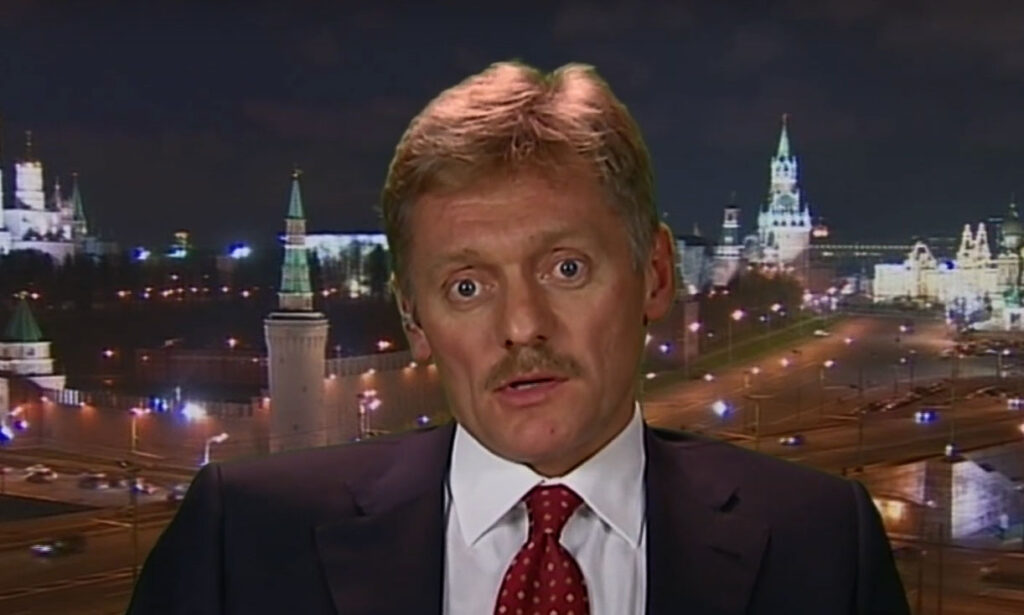The Biggest Unanswered Questions About the Reagan Airport Crash

© Al Drago for The New York Times

© Al Drago for The New York Times

© Chris Pizzello/Invision, via Associated Press

L'ancienne sélectionneuse a retrouvé un poste avec les Phoenix de Wellington.


© Geophysical Service of the Russian Academy of Sciences


/2023/08/24/64e765bb97cae_macron-referendum.jpg)
/2025/07/30/000-49xn79d-688a09f47c194741103789.jpg)


Ten days. That’s how long Donald Trump gave Vladimir Putin to end the war in Ukraine before facing new American punishment.
But will Congress wait that long?
Senator Richard Blumenthal thinks not. The Connecticut Democrat wants an immediate vote on sweeping Russia sanctions legislation, telling Suspilne News that Putin “does not deserve additional time.”
Blumenthal and his Republican co-author Lindsey Graham have been pushing the sanctions bill since April. Eighty-one senators support it. Yet it sits in limbo while Trump experiments with presidential ultimatums.
“Everything the president is doing is in the right direction, but I strongly advocate for sanctions to be 500%, not 100%,” Blumenthal said.
Blumenthal emphasized the importance of demonstrating unity between the executive branch and Congress on Ukraine policy.

Republican Senator Roger Marshall offered a different perspective, telling Suspilne News that Trump should be given “maximum flexibility” during the 10-day period. However, Marshall acknowledged that “Putin is not responding to anything” and advocated for comprehensive sanctions including potential banking sector measures and secondary sanctions.
Graham takes a harder line. If Putin won’t negotiate, Trump should target China and India—Russia’s biggest oil customers.
“He can do this through an executive order or through legislative initiative in Congress,” Graham told Suspilne News.
Can they actually pass this thing? The numbers look good. Blumenthal counts 85 Senate supporters and believes they can reach 90 votes if needed.
Despite this backing and failed ceasefire negotiations in Istanbul, Trump had previously stated in May that Washington would not impose additional Russia sanctions.
Moscow’s response? Kremlin spokesman Dmitry Peskov acknowledged the deadline but said Russia’s “special military operation” continues and negotiations require momentum from both sides.
This stance reflects their determination to sustain the war despite international pressure and economic measures intended to weaken Russia.
Meanwhile, Ukraine keeps destroying Russian military assets faster than Moscow can replace them. The senators argue economic pressure should match that pace.
Graham puts it simply: “The president will increase pressure on Russia’s clients to get Putin to the negotiating table.”
Whether that pressure comes through congressional action or Trump’s executive measures may depend on how the next few days unfold. Putin’s silence on Trump’s deadline suggests he’s betting the president won’t follow through.

Ukrainian special forces landed on a Russian-controlled island in the Black Sea on 28 July night and wiped out the entire garrison without any Ukrainian casualties.
The target? Tendrivska Spit, a 65-kilometer sliver of land jutting into the Black Sea near occupied Kherson. Why this particular piece of sand and scrub?
The Russians had turned it into an electronic warfare hub. Ukraine’s Main Intelligence Directorate says their commandos destroyed a “Zont” jamming complex and a “Rosa” radar station along with the troops manning them.
Here’s what makes this operation notable: Tendrivska Spit sits in contested waters where both sides have been trading blows for months. The narrow island—barely 1.8 kilometers wide at its broadest point—gave Russian forces eyes and electronic ears across a significant chunk of the northern Black Sea.
Not anymore. Ukrainian intelligence released footage showing their blue and yellow flag flying over the position.
Ukraine captures strategic island in the Black Sea after eliminating the entire Russian garrison in a daring nighttime raid — Ukraine's intelligence.
— Euromaidan Press (@EuromaidanPress) July 30, 2025
The special forces assault on Tendrivska Spit destroyed sophisticated Russian electronic warfare equipment—including a "Zont"… pic.twitter.com/88rs6vhbfo
How did they pull it off? The operation relied on boats funded through a private initiative called “Boats for HUR,” run by the Ukrainian Diana Podolyanchuk Charitable Foundation. International donors helped pay for the watercraft that carried the assault team to their target.
The timing matters. Ukrainian forces have been systematically targeting Russian positions on isolated islands and coastal areas, using their advantage in small boat operations. Each successful raid forces Russia to commit more resources to defending scattered outposts.
Can Russia replace what they lost? The electronic warfare equipment destroyed in the raid represents sophisticated gear that takes months to produce and deploy. The radar station gave Russian forces advance warning of Ukrainian naval movements—a capability now gone.
The operation signals Ukraine’s growing confidence in conducting amphibious raids deep behind Russian lines. Previous strikes hit Zmiinyi (Snake) Island and other Black Sea positions, but Tendrivska Spit sits closer to the Ukrainian mainland, suggesting expanded operational reach.




© Copyright 2023 The Associated Press. All rights reserved.
/2025/07/30/068-aa-30072025-2352277-688a01ad4457c440646667.jpg)


A Hamilton-area modular-home builder faces a court-ordered receivership process with creditors seeking repayment of more than $17-million, but still believes the future is bright for prefabricated homes.
“Were there barriers in the market? Absolutely; this is an up and coming industry, we’re going to see a lot of people coming into the market being unsuccessful. If 100 are coming maybe 95 won’t be successful for many reasons, good or bad,” said Ali Kerem Ozden, owner and president of BECC Construction Inc., who hopes his company can be restructured through the receivership process.

© Thomas Peipert
Good morning. University admissions are more competitive than ever thanks to an avalanche of applications, a relatively small number of seats, and rising grade inflation. More on that below, plus Canada’s top court prepares for Quebec’s Bill 21 hearing, and Mexico’s trade struggles. But first:

© Paul Reid

Le Service des incendies et sécurité civile de la Ville de Trois-Pistoles a mis en service cette semaine un tout nouveau véhicule d’élévation, communément appelé « camion à grande échelle ». Ce véhicule spécialisé représente une avancée majeure pour la sécurité publique.
Jusqu’à maintenant, la Ville devait faire appel aux services de Rivière-du-Loup pour ce type d’intervention, ce qui entraînait des délais d’environ 45 minutes.
Grâce à l’acquisition de ce nouveau camion, le temps de réponse est désormais réduit à quelques minutes seulement, offrant une capacité d’intervention rapide et efficace en hauteur, notamment pour les incendies et les sauvetages complexes.
Cette acquisition s’inscrit dans une volonté du conseil municipal d’accroître la sécurité des citoyens.
En mars 2024, le conseil municipal a autorisé l’adjudication du contrat à l’entreprise Aéro-Feu Ltée, au coût de 774 931,50 $ taxes incluses, pour l’achat d’un véhicule d’élévation usagé, équipé et conforme aux besoins du Service.

Ce nouvel équipement marque une première historique pour le Service des incendies et sécurité civile de la Ville de Trois-Pistoles, qui n’avait jamais disposé d’un tel véhicule depuis sa fondation.

Ukrainian intelligence operatives conducted a major cyberattack against Russian authorities in occupied Crimea, downloading 100 terabytes of classified data before destroying the original files, according to RBK-Ukraine citing sources in Ukrainian intelligence.
The multi-day operation targeted electronic document management systems used by Russian-controlled government institutions across the peninsula, according to the report. Cyber specialists from Ukraine’s Main Intelligence Directorate (GUR) penetrated digital cabinets of Crimean Russian leadership and gained access to several key systems.
“Dialog” and “Delo” electronic document management systems were compromised, along with accounting systems “1C:Document Flow,” Directum, and “ATLAS,” the report said. The systems handle legally significant electronic document flow for government agencies, budget institutions, state committees, and municipal bodies including the apparatus of the Russian Council of Ministers of Crimea.
The downloaded data included documents marked “secret” containing information about Russian military facilities and logistical supply routes for Russian forces on the peninsula, RBK-Ukraine reported. After copying the information, GUR cyber specialists destroyed all data stored on servers of regional and district government institutions, ministries, and departments of Russian authorities in Crimea.
A DDoS attack reportedly paralyzed information systems and network infrastructure in Crimea during the operation. Russian media made only brief mention of the cyberattack, with the press service of the Russia-controlled Ministry of Information reporting “a massive DDoS attack on major fixed-line communication operators.”
“Some services may be periodically unavailable to subscribers,” the ministry said, without specifying the scale of the problem or the number of affected operators.
Russian State Duma officials expressed concern but provided no details about compromised information.
Ukrainian intelligence sources indicated the obtained data contains significant intelligence value.
“So much data was downloaded there that we will soon learn many sensations about the activities and crimes of Russian occupiers in Ukrainian Crimea,” a Ukrainian intelligence officer told RBK-Ukraine.
The breach also provided access to officials responsible for “patriotic education” and organizing exhibitions and street actions aimed at discrediting Ukraine, according to Armed Forces of Ukraine officer and political scientist Andriy Tkachuk writing for Ukrinform.
“Evidence was obtained of coordination between local administrations and the ‘representation of the Russian Foreign Ministry in Simferopol,’” Tkachuk wrote. “The Russian Foreign Ministry distributes narratives, ‘republican ministries’ transmit them to districts, and schools and universities become retransmitters of Kremlin lies.”
A military expert from Crimea, a former Ukrainian officer and reserve lieutenant colonel of the Armed Forces of Ukraine, told Krym.Realii on condition of anonymi that “Russian authorities in Crimea during the war closely interact with Russian military forces. This means that GUR will have a set of correspondence from which many interesting intelligence data can be ‘extracted,’.”
“All civilian administrations of Crimean districts and cities, as well as ministries and departments, issue secret orders and other documents related to territorial defense and more. This is not just important information, but the most important, like the mentioned logistical supply routes for troops,” he added.

The Kremlin has rejected President Donald Trump’s ultimatum for Russia to negotiate an end to its war in Ukraine within 10 days, with officials reaffirming Moscow’s commitment to continue military operations until achieving its stated objectives.
Trump announced the deadline on 29 July before boarding Air Force One, warning that tariffs would take effect if Russia refused to stop the war. “Ten days from today. And then we’re gonna put on tariffs and stuff,” Trump told reporters, according to audio published by the White House.
The threatened tariffs would target secondary sanctions on countries purchasing Russian oil, gas and other products, including China and India. Trump acknowledged uncertainty about the measure’s impact, stating: “I don’t know if it’s gonna affect Russia, because he (Russian President Vladimir Putin) wants to obviously probably keep the war going, but we’re gonna put tariffs and various things.”
The announcement represents a shortened timeline from Trump’s previous ultimatum delivered 14 July, when he warned of “severe” tariffs up to 100% if Russia failed to agree to a peace deal within 50 days. Trump said on 28 July he was no longer willing to wait that long.
Russian Security Council Deputy Chairperson Dmitry Medvedev responded on his English-language X account, according to the ISW, that Trump cannot dictate negotiation timing. Medvedev said that negotiations will conclude only when Russia achieves all war objectives, likely referring to Moscow’s original aims including regime change in Ukraine, alterations to NATO’s open-door policy, and reducing Ukraine’s military capabilities.
Kremlin Spokesperson Dmitry Peskov echoed the rejection, claiming Russia will continue its war to protect national interests despite Trump’s revised deadline.
The Institute for the Study of War assessed Kremlin’s statements as efforts to compel Trump to abandon his deadline in favor of normalized bilateral relations and increased cooperation. ISW reported that the Kremlin remains uninterested in negotiations to end the war, instead seeking to protract the war to secure additional battlefield gains.

As the global tech landscape continues to evolve in 2025, the integration of blockchain ecosystems is opening new doors for everyday users to generate passive income. One notable trend is the rise of blockchain cloud mining, which combines the strengths of digital asset platforms to streamline mining operations. Among the more surprising developments is the use of XRP—a token traditionally used for cross-border payments—to fund Dogecoin (DOGE) mining, creating a unique cross-chain use case.
This shift reflects a broader transformation in how digital assets interact. Traditionally, cryptocurrencies have existed in isolated qecosystems, each with its own rules, infrastructure, and communities. Now, platforms are bridging those gaps, allowing users to leverage one digital asset to unlock the utility of another.
XRP, the native token of Ripple’s payment network, has long been favored for its speed and low transaction costs, especially among financial institutions in regions such as Southeast Asia, Latin America, and the Middle East. Despite its utility in finance, everyday XRP holders often lacked ways to generate consistent, daily returns from their holdings.
Meanwhile, DOGE—once seen as a meme coin—has developed a strong community and use cases in mining, making it appealing for those seeking daily income through cloud mining.
A new approach allows users to deploy their XRP holdings to activate DOGE mining contracts via smart contracts. These contracts recognize XRP transfers and automatically allocate computing power toward DOGE mining. This is made possible by platforms such as BlockchainCloudMining, which aim to lower the entry barrier for mining by offering automated, cloud-based solutions.
Blockchain-based cloud mining platforms are positioning themselves as a user-friendly alternative to traditional mining, which often requires expensive hardware, ongoing maintenance, and technical expertise.
Here’s how the process typically works:
What makes this innovation particularly noteworthy is the interoperability between assets. XRP, a token designed for utility in financial networks, is now being used to activate mining for an unrelated digital asset. This kind of synergy reflects the maturing blockchain industry, where the focus is shifting from isolated speculation to functional, income-generating solutions.
As more users look for passive income strategies in the digital economy, technologies like smart contracts, cloud mining, and token bridges could redefine how everyday people engage with cryptocurrencies.
…….
The information provided in this article is not a solicitation to invest and is not intended as investment advice, financial advice, or trading advice. Cryptocurrency mining and staking involve risks. There is a possibility of loss of funds. You are strongly advised to perform due diligence before investing or trading in cryptocurrencies and securities, including consulting a professional financial advisor.

© Sergey Ponomarev for The New York Times